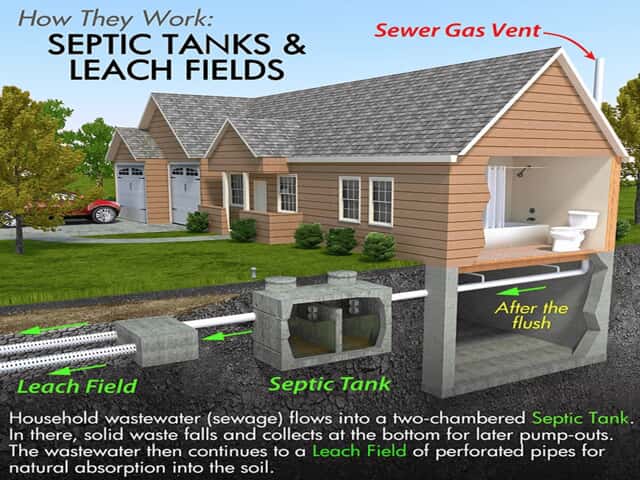
SPECIFICALLY, THIS IS HOW A TYPICAL SEPTIC SYSTEM WORKS:
All water runs out of your house from one main drainage pipe into a septic tank.
The septic tank is a buried, water-tight container usually made of concrete or plastic. Its job is to hold the wastewater long enough to allow solids to settle to the bottom forming sludge, while the oil and grease floats to the top as scum. Compartments and a T-shaped outlet prevent the sludge and scum from leaving the tank and traveling into the soil treatment area.
The liquid wastewater (effluent) then exits the tank into the soil treatment area (aka STA or leachfield)
The STA is a shallow, covered, excavation made in unsaturated soil. Wastewater is discharged through piping onto porous surfaces that allow wastewater to filter though the soil. The soil accepts, treats, and disperses wastewater as it percolates through the soil, ultimately discharging to groundwater. If theSTA is overloaded with too much liquid, it will flood, causing sewage to flow to the ground surface or create backups in toilets and sinks.
Finally, the wastewater percolates into the soil, naturally removing harmful coliform bacteria, viruses and nutrients.

FAILURE SYMPTOMS: MIND THE SIGNS!
A foul odor is not always the first sign of a malfunctioning septic system. Call NoCo Septic if you notice any of the following:
- Wastewater backing up into household drains.
- Bright green, spongy grass on the drainfield, even during dry weather.
- Pooling water or muddy soil around your septic system.
- A strong odor around the septic tank and drainfield.

